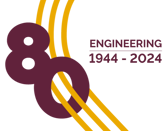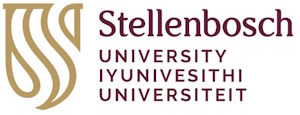
[Article by Petro Mostert]
Stellenbosch University’s (SU) Department of Electrical and Electronic Engineering boasts a new planar air-bearing test facility with a testbed for researchers to validate their projects and perform experiments in spacecraft and space systems. As part of the Electronic Systems Laboratory (ESL) research group, Daniel Jansen addressed the problem of designing and implementing this test facility and two air-bearing vehicles, named Laika and Belka after the first dogs to orbit the earth in a spacecraft, for his master’s thesis.
The Electronic Systems Laboratory (ESL) research group at Stellenbosch University focuses on controlling vehicles and robotics, including spacecraft and space systems.
Under the supervision of Drs Lourens Visagie and Willem Jordaan, Daniel’s project included the design of air-bearing vehicles, a pose estimator which measures the states of the vehicles being operated on the test facility, and a demonstration payload which can perform a controlled maneuver with the vehicle to showcase the test facility’s capabilities. A feedback and communication system (FCS) measures the positions and velocities of the air-bearing vehicles on the table. Data is logged and displayed to the user in near-real-time.
Daniel’s new test facility will replace the ESL’s archaic air-bearing vehicle. An air bearing creates a pressurised film of gas between itself and the surface it hovers, establishing an interface with very low friction. It is used to emulate the low-friction environment that spacecraft face in orbit. The vehicles hover on top of this table during experiments.
In the world of designing and manufacturing spacecraft components, hardware and software must be thoroughly tested and validated before they can be used in actual space missions – hence the need for satellite test facilities, otherwise known as simulators.
As part of Daniel’s project, he also designed 3D-printed nozzles for air-bearing vehicles. The design and testing of these nozzles contributed to an international conference paper (SAUPEC/RobMech/PRASA 2020).
In the meantime, Daniel’s project has gained further momentum, says Prof Jordaan. “Gideon Serfontein, currently in his first year as a master’s student, is developing a satellite test setup that will work on the air-bearing vehicles, including an attempt to simulate “docking” of two satellites with them.”
Gideon says this system, consisting of a mechanism to allow two small satellites to lock together, a pose estimation system, and a control system to control the maneuvers of the satellites in orbit, should allow for a suitable range of approach angles and rotations. “The aim is to make the adapters androgynous, so both satellites use the same mechanism. Such a design would allow for modularity in future space missions and missions that enable additional spacecraft to be added on at a later stage. The pose estimation system will consist of a pattern of LEDs and a camera on the adapters to allow the system to determine the relative position and rotation of the satellites. According to Gideon, based on this data, a control system will drive reaction wheels, thrusters, and electromagnets to bring the satellites together for docking. They will test this system on the air-bearing vehicles on the glass table.
Sam Jeffery, who is currently in his second year doing his master’s degree, is working on a project that will complement the new test facility by adding “flat-sat” components to the air-bearing vehicles. “These components mimic the functionality of typical satellite subsystems, such as power, communications, and onboard computing.”
Read Daniel’s complete research paper here: Daniel Christopher Jansen, The development of a test facility for satellite experiments, M.Eng dissertation, Stellenbosch University, 2021 https://scholar.sun.ac.za/handle/10019.1/109916.
Photograph:
(left) Graduate Daniel Christopher Jansen.
(middle) The final version of the air bearing vehicle at the end of the project, including the fiducial marker on the top plate used for tracking the vehicle with the camera system.
(right) Postgraduate students, Gideon Serfontein and Sam Jeffery.



